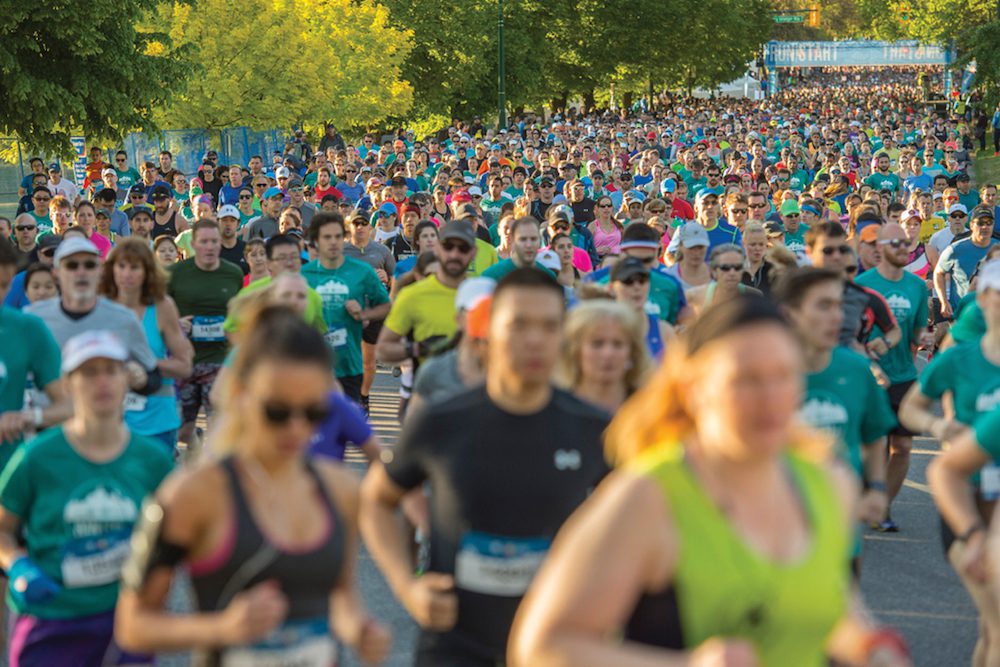Marathon taper time: What that means for you
Resting before any race is always encouraged, but when it comes to the marathon, getting the taper right is essential for peak performance


Those training for an upcoming marathon should know that the final weeks before race day are essential for one’s success. So important that it’s got it’s own name: the taper.
The taper is a period of time when athletes scale back their training to rest and recover for race day. The miles have been run, the hard work done, and as the popular adage goes, “the hay is in the barn.” There is indeed very little you can do at this point to get fitter or faster, yet a lot you could do to sabotage your training.
The point of the taper is to reduce total training volume in order to let the body fully recover and adapt to past training. Exactly how much to scale back varies by individual, but many popular programs suggest reducing peak mileage by about 20-25 per cent each week in the final three weeks of training. The frequency of running should remain roughly the same and runners are encouraged to maintain a small amount of intensity too. If done right, a taper can improve one’s performance by as much as five per cent, which can mean several minutes in a marathon. That could be the difference between a new PB or possibly even a coveted BQ.
Three weeks is about the most you’d want to consider for a good taper. Many elite runners opt to do a shorter taper which occurs over the final 10-14 days and prevents them from feeling stale. “Less is more” is never more true than when talking about the marathon taper. Be assured you will not lose your hard-earned fitness or suddenly forget how to run long or fast. If ever in doubt, run less.
RELATED: Surviving marathon taper madness
But even after you’ve trained for months and tapered in the final few weeks, there is still the small matter of running 42.2K on race day, where quite a bit can still go wrong.
The two most significant errors one can make on marathon race day pertain to proper pacing and in-race fueling/hydration.
The former is simple, in theory. You should choose a pace that you can reasonably expect to run for the entire 42.2K and stay consistent throughout (i.e. run an approximately even split where the first half takes the same time as the second half). If you’ve run tune-up races during training, prediction calculators should give you a good indication of what you should aim for, but best be conservative in order to avoid a nasty fade. Going out too fast will definitely hurt you over the course of a marathon.
The far more complicated issue pertains to how to fuel and hydrate effectively during such a long race. This is something you should train for and practice in longer runs and races. Whether you choose to use the supplied in-race beverage or your own choice of energy gel, drinks or chews, you will inevitably need to take on fuel during the race. This is to help prevent “hitting the wall,” which refers to running out of the body’s stored glycogen (carbohydrate) reserves.
RELATED: Become bonk-proof: How to avoid hitting the wall
Fueling can often be as much part art, as it is a hard science, but a general rule is to aim for 30-60 grams of carbohydrates per hour of running. This equates to about one gel every 8-12K or a package of chews each half of the race. Start early and keep fueling even if you don’t want to.
Hydration in a marathon is also critical. Although it is a complicated and controversial subject, it’s better to err on the side of caution and remain adequately hydrated. This means topping up in the week before the race by increasing your daily water and fluid intake as well as taking water or energy drink during the race. Note that some dehydration is likely to occur and in fact, up to even five per cent dehydration does not significantly impact performance. How much you drink on race day will ultimately depend on the weather and how much you sweat. Hot and humid weather and/or higher individual sweat rates will require greater re-hydration practices so do what works best for you.
Finally, do yourself an additional favour and maximize your fuel stores by carb loading in the two-to-three days before the race. This involves eating a higher concentration of carbohydrates as part of your diet.
RELATED: Fueling for performance: Carbo loading dos and don’ts
The take home message here: In order to maximize performance on marathon race day you a) have to taper your training in the final 10-21 days before the race, and b) you need to fuel and hydrate both before (by carbo loading) and during the race.


